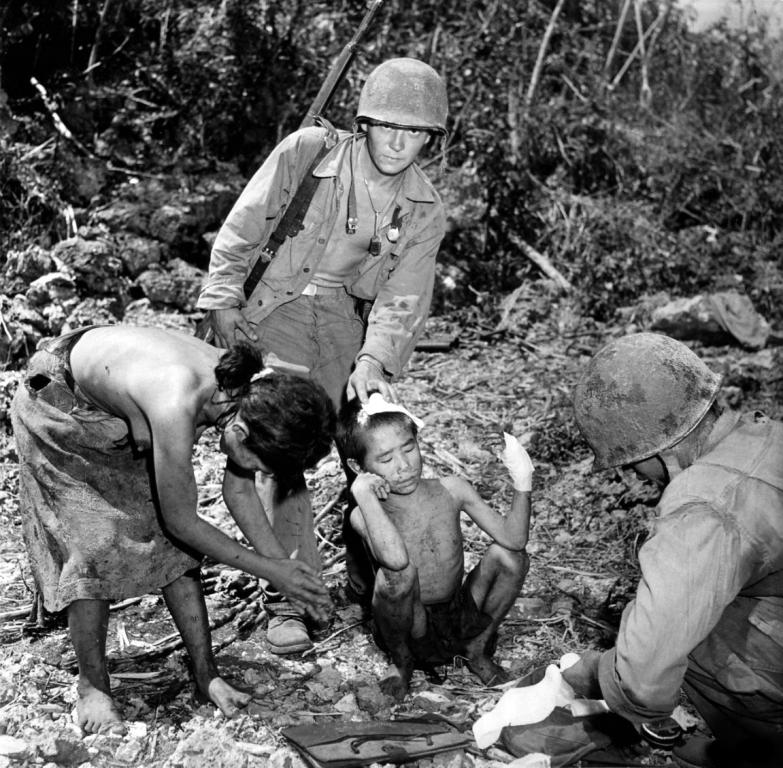1. A United StatesMarine combat medic tends to a wounded Japanese
boy who suffered injuries during the Battle of Saipan as his mother bows in appreciation. Like many Japanese civilians on Saipan, the two had hidden themselves in bunkers during the battle, fearing they would be tortured or killed by U.S. military personnel if they surrendered. Japanese military officials gave radio broadcasts to the civilian population detailing fabricated accounts of how they would be systematically tortured if they fell into the hands of the Americans. At the end of June 1944, with the battle winding down and a U.S. victory apparent, Japanese Emperor Hirohito sent out an imperial order encouraging the civilians of Saipan to commit suicide. The order authorized the commander of Saipan to promise civilians who died there an equal spiritual status in the afterlife with those of soldiers perishing in combat. By the time the U.S. Marines advanced on the north tip of the island, between 8 to 12 July 1944, approximately 1,000 Japanese civilians committed suicide to take the offered privileged place in the afterlife, some jumping from locations that would be later named “Suicide Cliff” and “Banzai Cliff”. Saipan, South Pacific Mandate (now, Commonwealth of the Northern Mariana Islands). July 1944. Image taken by W. Eugene Smith.
Information

Warning: This is a relatively older thread
This discussion is older than 360 days. Some information contained in it may no longer be current.
- Knowledge Library

- MKL Entry of the Month
- Australia
- Austro-Hungarian Empire
- Canada
- Czechoslovakia
- Denmark
- Finland
- France/Belgium
- Germany
- Italy
- Japan
- Norway
- Russia
- South America
- Sweden
- Switzerland
- Turkey
- United Kingdom
- United States
- Yugoslavia
- Is my rifle authentic or a fake?
- Jay Currah's Lee Enfield Web Site
- On-line Service Records (Canada)
- Technical Articles/Research
- Forum
- Classifieds

- What's New?
-
Photo Gallery

- Photo Gallery Options
- Photo Gallery Home
- Search Photo Gallery List
-
Photo Gallery Search
- Video Club

- iTrader












 PM
PM
